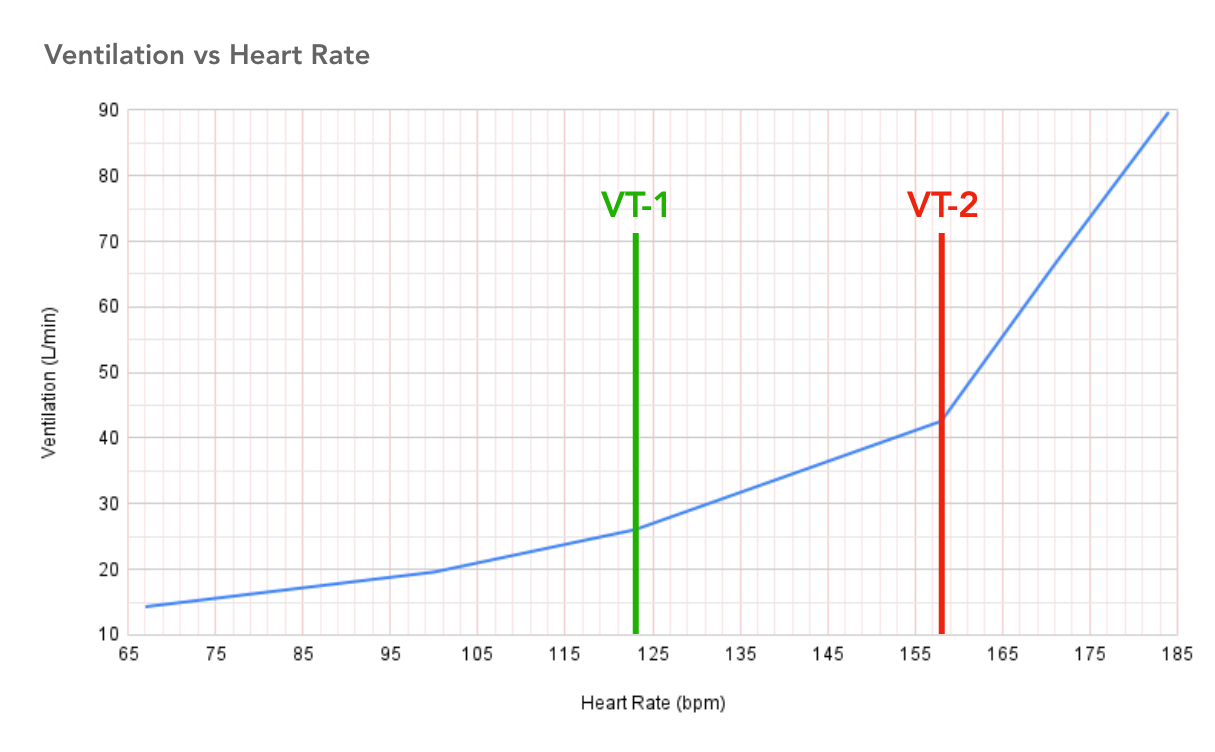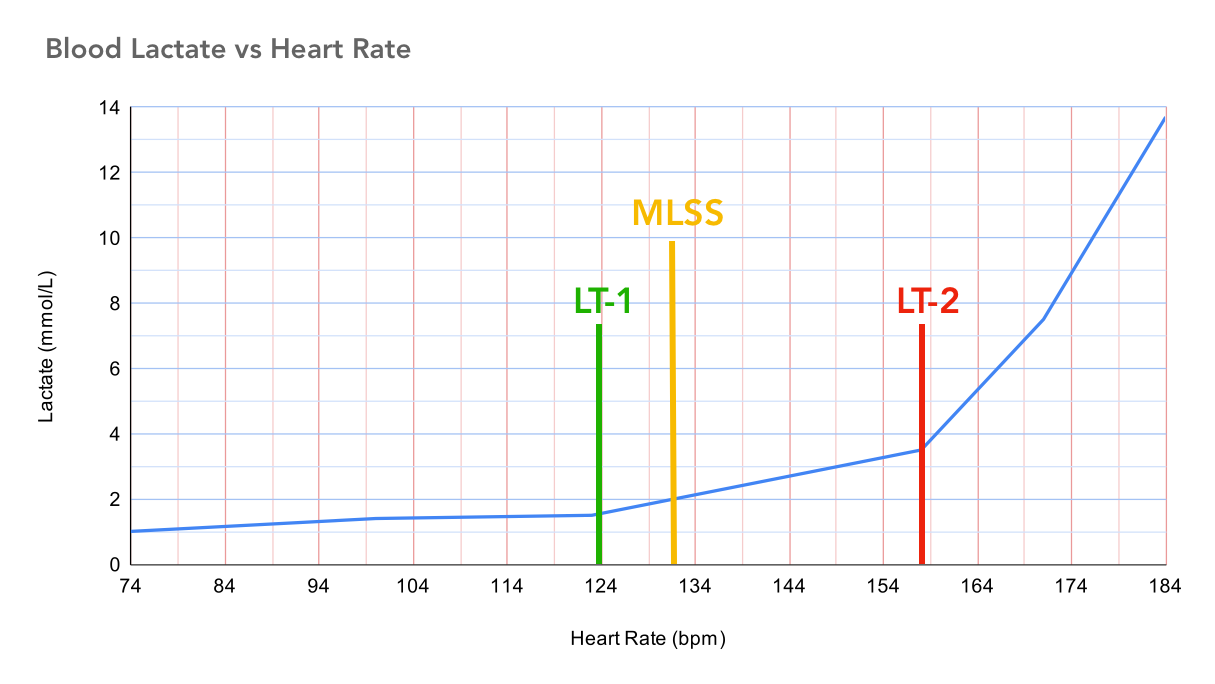In the last article, I introduced some heart rate training zone ideas for three different types of athletes: endurance, strength, and CrossFit. You can find that email through the link below if you missed it.
Heart rate training zones – pt 5, Athletes
Today, we will take a deeper look into heart rate training for the Professional.
The Professional wants to know the mechanics of energy systems. They want to look “under the hood” and see how the machine works. The Professional is constantly testing and retesting. They are experimenters. Professionals are continually tinkering with training programs, looking for ways to improve outcomes.
This email will look at two standard tests for helping to understand how your body’s energy systems work – VO2 max and blood lactate testing.
VO2 Max Testing
VO2 max is the maximum amount (volume) of oxygen (O2) your body can use during intense exercise. It is a measurement of how efficiently your body utilizes oxygen during exercise.
VO2 max is helpful because it can help measure fitness and heart health improvements over time. Knowing your VO2 max can be an indicator of your overall cardiorespiratory fitness.
To measure VO2 max, individuals need to visit a lab or testing center. During the test, a mask is placed over the face to capture the oxygen in the breath.
The individual then performs a maximal graded test, such as walking or running on a treadmill or riding a stationary bike. The amount of oxygen consumed during the exercise is measured.
It’s important to note that there is no single number that everyone should reach for VO2 max, as it varies from person to person. Professional athletes usually have higher VO2 max values than the general population.
According to research as part of the HUNT 3 fitness study, the average healthy male has a V̇O2 max of approximately 44 mL/kg/min. The average healthy female has a V̇O2 max of about 35 mL/kg/min. (1)
VO2 decreases with age, but you can improve it with training.
According to the American College of Sports Medicine, “excellent” VO2 for men 40–50 years old is >50 mL/kg/min. For women 40-50 years old, it is >45 mL/kg/min. (2)
Improving VO2 max can be achieved through various methods. Yet, as we’ve stated in previous emails, training just below your aerobic threshold (AeT) and just above your anaerobic threshold (AnT) appears to have the most significant impact on VO2. (3,4)
A VO2 test will provide you with a measure of your overall cardiovascular fitness and your ventilatory threshold (VT).
There are two VTs identified in a VO2 test. VT-1 marks the AeT, whereas VT-2 marks your AnT.
The data used in the chart below is from my VO2/Lactate test done at the UM’s Human Performance Lab.

Alan Couzan recommends annual VO2 tests and regular blood lactate testing for monitoring changes in an athlete’s physiology over time. (5)
Alan Couzens is an exercise physiologist, developer, and health/fitness/performance coach for endurance athletes. Alan is known for his expertise in Ironman training and has provided specific recommendations for Ironman athletes.
Blood Lactate Testing
Blood lactate testing is a method used to measure the level of lactic acid, also known as lactate, in the blood. Lactic acid is produced by muscle tissue and red blood cells when oxygen levels decrease, such as during intense exercise or in certain medical conditions.
Blood lactate testing is commonly used in sports and exercise physiology to assess an individual’s lactate threshold. The lactate threshold is when the body accumulates lactate in the blood faster than it can clear.
The lactate threshold is a valuable marker of endurance performance and can help athletes determine their optimal training zones.
During a blood lactate test, blood samples are collected at various stages of exercise intensity. This can be done by pricking a finger or earlobe to obtain tiny droplets of blood. The samples are then analyzed to measure the lactate concentration.
The results of a blood lactate test can provide valuable information about an individual’s aerobic fitness, endurance capacity, and training zones. By identifying the lactate threshold, athletes can tailor their training programs to improve their performance and endurance.
It’s important to note that blood lactate testing is not limited to sports performance. It is also used in medical settings to diagnose conditions such as lactic acidosis, a potentially life-threatening condition characterized by high levels of lactate in the blood.
There is a lot of discussion around what constitutes lactate threshold. For this email, we will use the methods proposed by Jesús Pallarés and his team of researchers at the University of Murcia in Spain. (6)
According to Pallarés, there are three essential lactate thresholds. The first is the lactate threshold (LT).
LT represents the workload that causes blood lactate to rise .5 mmol/L above resting. LT correlates well with VT-1 and your AeT.
Next is what’s called maximum lactate steady state (MLSS). We have yet to talk about MLSS. But MLSS is the highest workload that a person can sustain where lactate does not continue to increase. Determining MLSS often involves multiple tests over several days.
According to Pallarés, LT+.5 mmol/L marks your MLSS. Using LT+.5 will allow the coach and athlete to minimize the number of tests required to find the MLSS.
And lastly, the third lactate threshold that’s worth knowing is LT+2. LT+2 is 2 mmol/L above the first LT. It correlates with VT-2 and your AnT.
The chart below is an example using Pallarés method. The data used was from my VO2/Lactate test done at the UM’s Human Performance Lab.

For clients of my fitness program, I’ve created a blood lactate test using the Concept 2 rower.
Using six stages of increasing intensity based on their best 500 m row time, we can identify the three lactate thresholds. We can then customize their three or five heart rate training zones from these three markers.
Professional athletes would need to conduct their VO2 and blood lactate tests using the modality of their sport. VO2 and blood lactate levels on a rower would not provide as useful data for a runner or cyclist.
Additionally, tests are precise with the kind of data they provide. You’ll want to combine the information from your VO2 and lactate tests with your field tests and perceived exertion rates to guide your programming better.
1. Loe, Henrik, et al. “Cardio-Respiratory Reference Data in 4631 Healthy Men and Women 20-90 Years: The HUNT 3 Fitness Study.” PLoS ONE, edited by Harm Bogaard, vol. 9, no. 11, Nov. 2014, p. e113884.
2. “ACSM’s Health-Related Physical Fitness Assessment Manual, 5th edition.” American College of Sports Medicine, 2019, https://www.acsm.org/docs/default-source/publications-files/hrpfam5_table-8-9-updated.pdf?sfvrsn=e82139fc_4.
3. San-Millán, Iñigo, and George A. Brooks. “Assessment of Metabolic Flexibility by Means of Measuring Blood Lactate, Fat, and Carbohydrate Oxidation Responses to Exercise in Professional Endurance Athletes and Less-Fit Individuals.” Sports Medicine, vol. 48, no. 2, Feb. 2018, pp. 467–79.
4. Helgerud, Jan, et al. “Aerobic High-Intensity Intervals Improve V˙O2max More Than Moderate Training.” Medicine & Science in Sports & Exercise, vol. 39, no. 4, Apr. 2007, pp. 665–71.
5. Couzen, Alan. “Chapter 6: Everything you need to know about Training Zones.” The Science of Maximal Development, Substack, Jan. 2023, https://alancouzens.substack.com/.
6. Pallarés, Jesús G., et al. “Validity and Reliability of Ventilatory and Blood Lactate Thresholds in Well-Trained Cyclists.” PLOS ONE, edited by Øyvind Sandbakk, vol. 11, no. 9, Sept. 2016, p. e0163389.